Recently I have visited the region between the city of Tomar and the village of Dornes, in the central part of Portugal. The plan was to visit some of the famous monuments of the area, namely the ones dating back to the period of the Templars, that is, the 12th century. I also wanted to walk the trail around Dornes, the small medieval village that lies on the bank of the river Zêzere. The area is shown in the figure below.

The very old Order of the Temple was established in Portugal around 1126, a few years before the country’s independence in 1143. At the time, the knights had a significant role helping the first Portuguese King, Afonso Henriques, fighting against the Moors and expanding the territory towards the south. While the Order was extinguished by pope Clement V in 1307, in Portugal King Diniz transformed it into the Order of Christ in 1319, thus maintaining its patrimony. This important decision allowed the Order to establish its headquarters in Tomar, where they built the famous Convent of Christ. The nearby Tower of Dornes is also an interesting structure. I have decided to split this essay into two parts, the first one dedicated to Dornes, and the second one to Tomar.
The village of Dornes lies near the river Zêzere, about 2 hours drive to the northeast of Lisbon. I arrived early in the morning of 30th December, with the area covered by a freezing fog, and no soul in sight. No doubt, Covid and the cold were keeping everybody home. This is a mountainous region, characterized by forests and deep valleys. A large fire affected the area in 2017, and some of the effects are still visible when walking along the trail. Dornes has a very old history, dating back to Roman times, when the first fortification was built to protect the gold mining from the river. It also played an important role in the Christian reconquering of Portugal, when the Templar Knight Gualdim Pais decided to build the strong structure that we still see today.
Walking along the deserted streets, with the morning fog obscuring the river, it is not difficult to be transported 800 years back. The tower itself is unique due to its pentagonal plan. After a short walk near the river to admire the view, it was time to start the trail, which is indicated as PRZ1. Since it is a circular route, it really does not matter which direction to go, so I decided to do the trail counterclockwise. The first part is along the road leaving Dornes, but soon the path starts to climb the neighboring mountains. It is possible to spot the sunshine above the fog, and as the morning passes the fog starts to lift. Given the recent heavy rains, the forest is dripping with water, and green predominates.
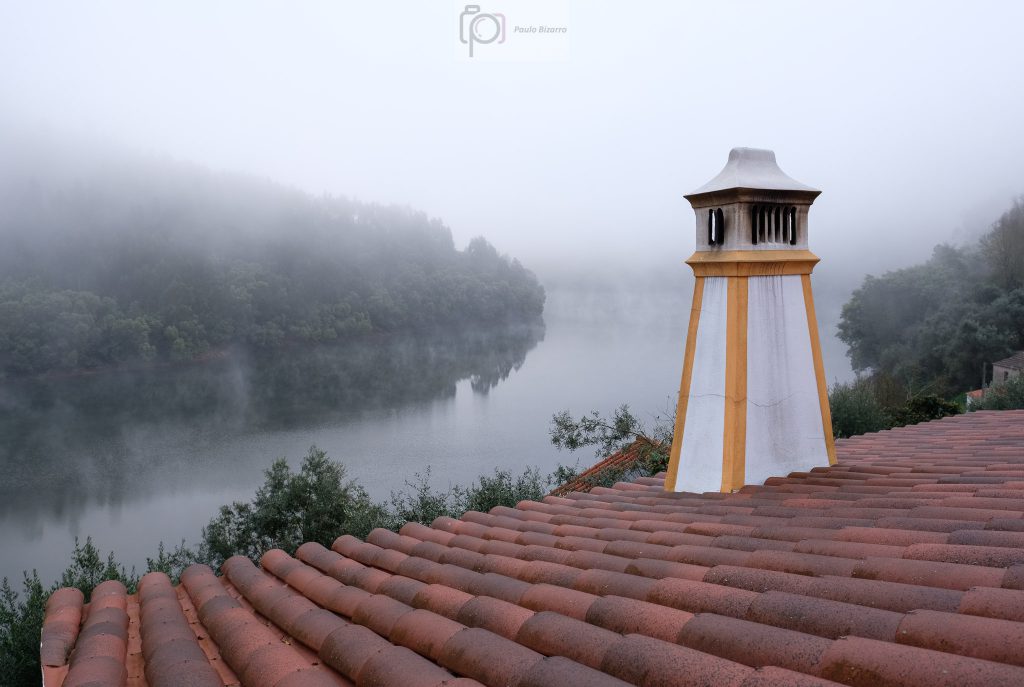
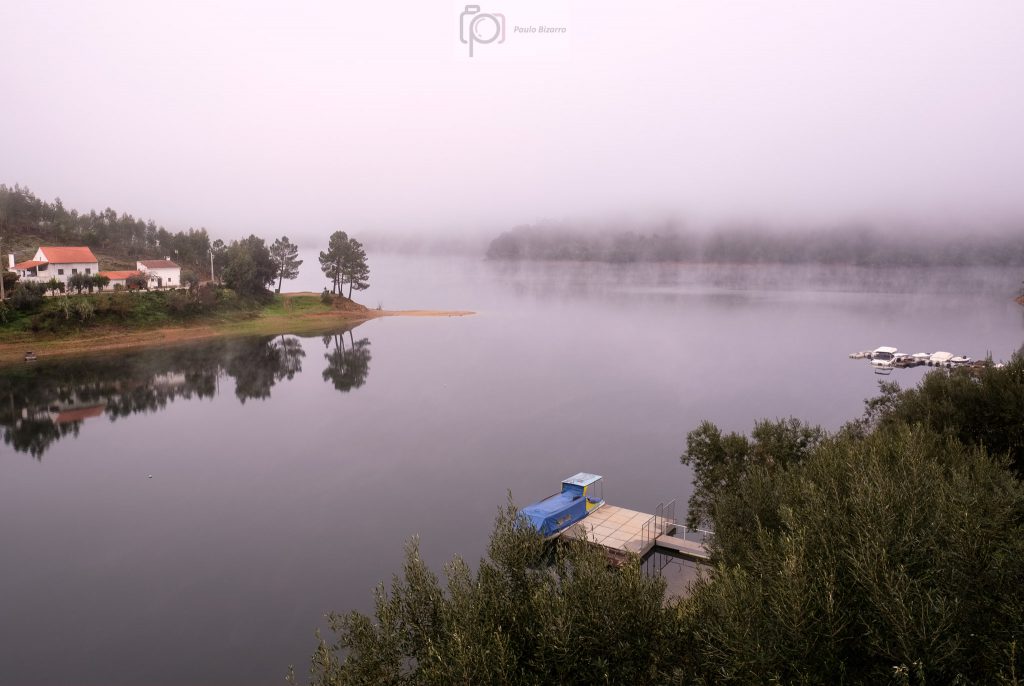
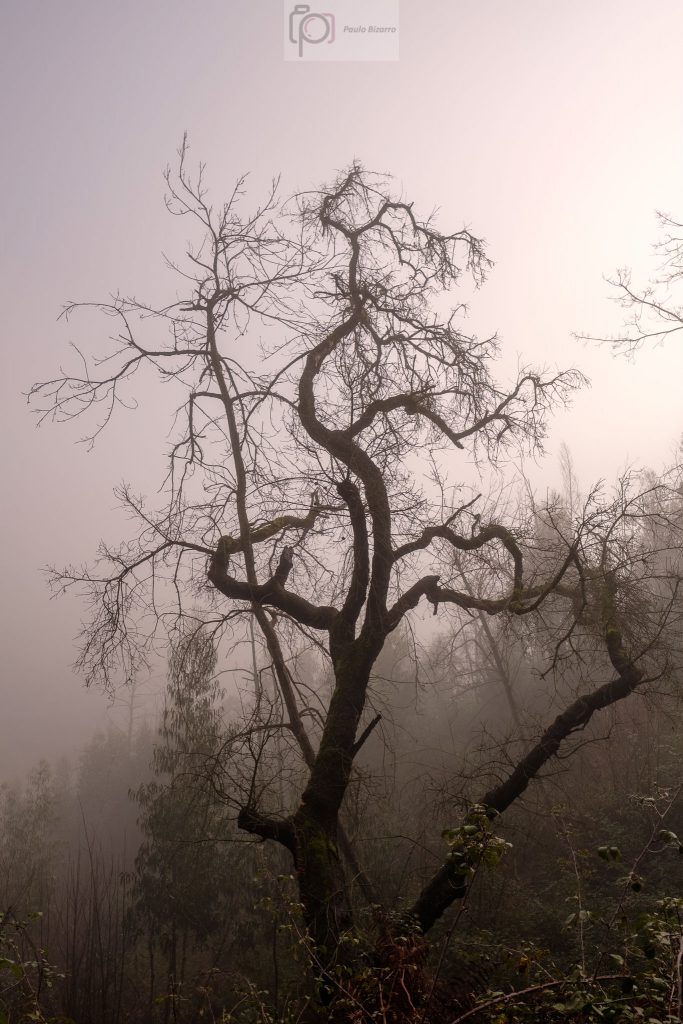
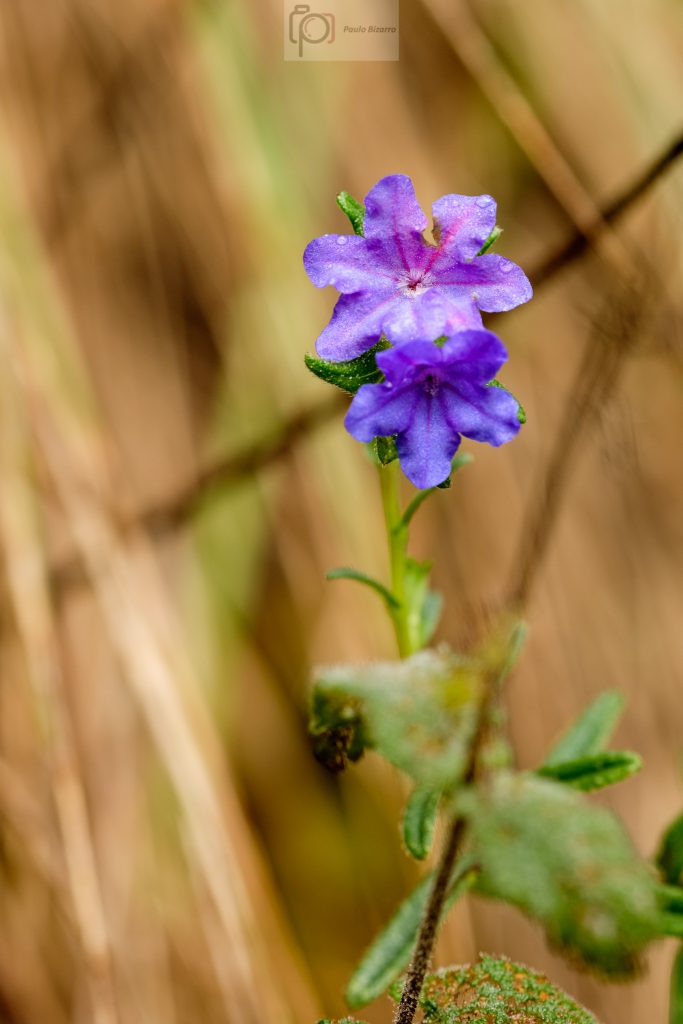
After a while the trail becomes more difficult, as it is clear that its maintenance has been overlooked. The path is covered with a lot of overgrowth, burnt tree stumps, and several signposts are missing at critical junctions. However, as the fog lifts, the views towards the village and the mountains are very nice and compensate for the extra challenge.
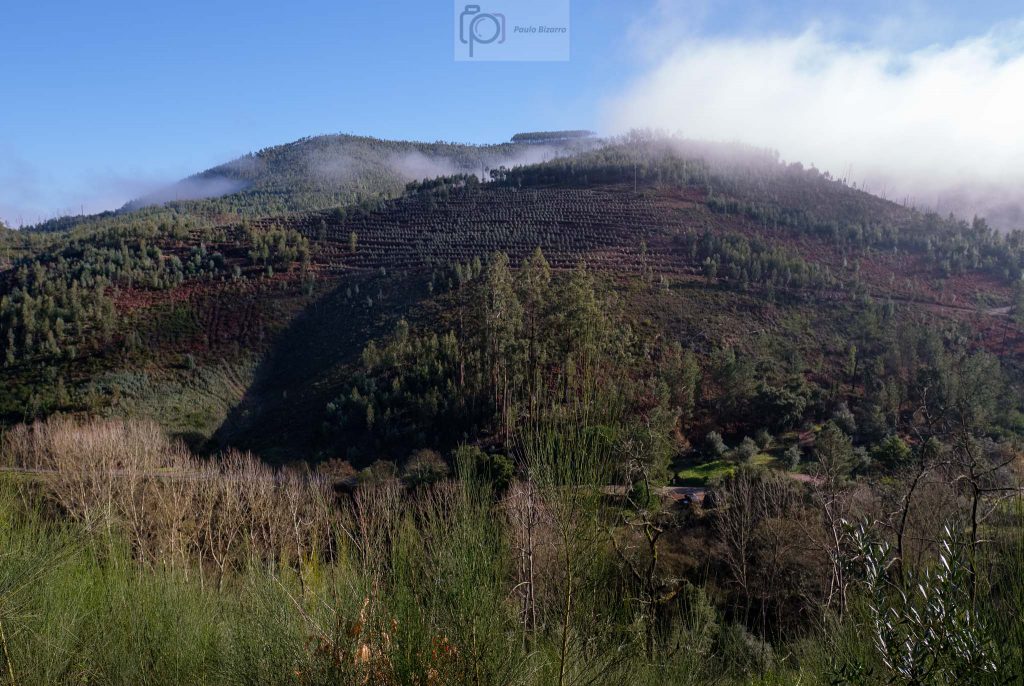
The trail keeps winding around and over the mountains and forests, until it arrives at a nice viewpoint over Dornes. From here, it is possible to appreciate its strategic location near the river. It is a beautiful view.

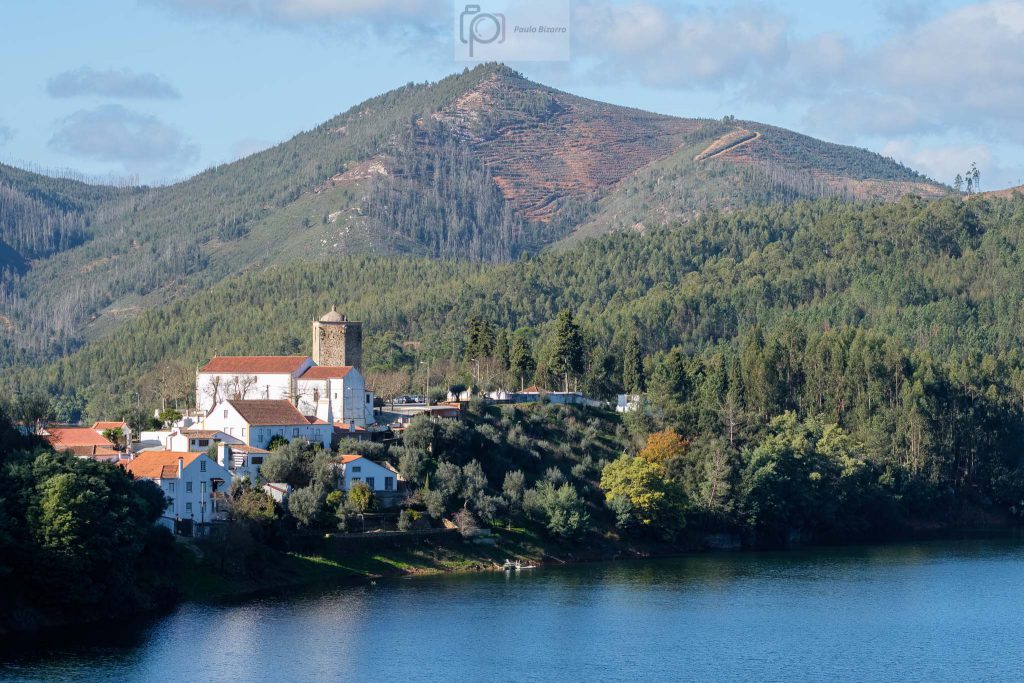
Returning to the village, I spent some time making some extra photos near the river, playing around with the reflections of the trees on the water.
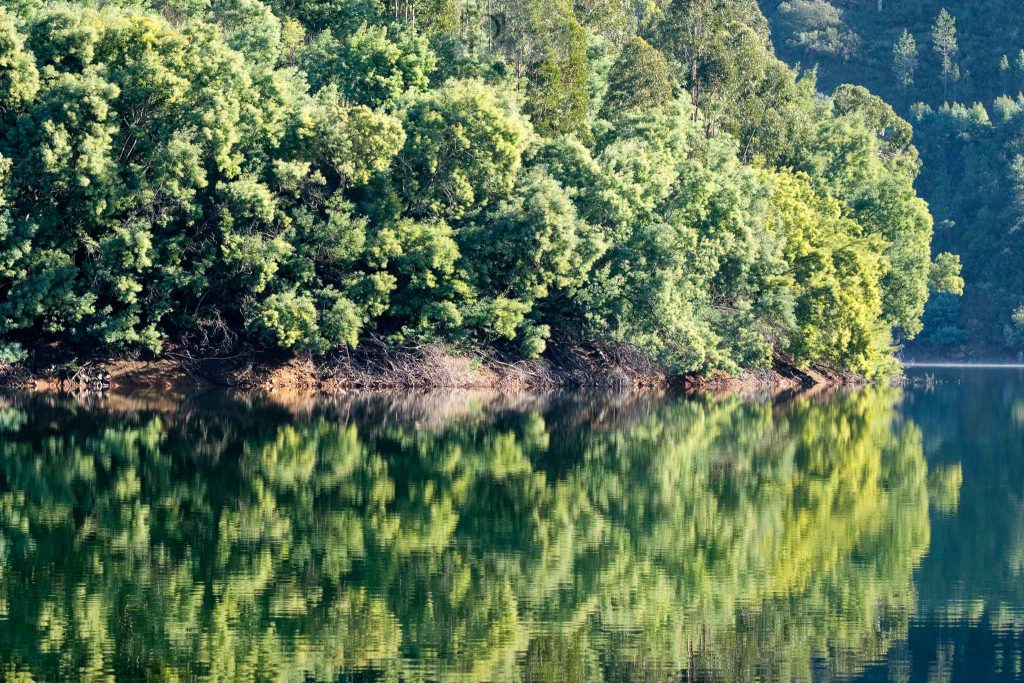
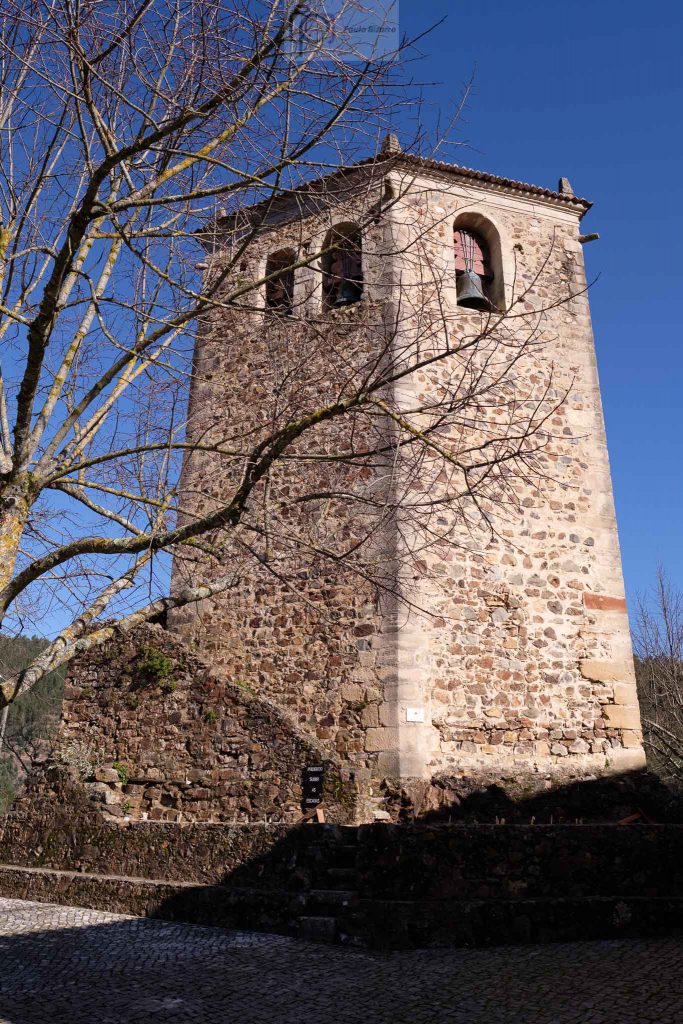
In terms of photo equipment, I used my usual Fujifilm kit, consisting of a couple of cameras and lenses: one 24mm wide angle, one 90mm telephoto. This was flexible enough to allow different framing, according to the scenery.